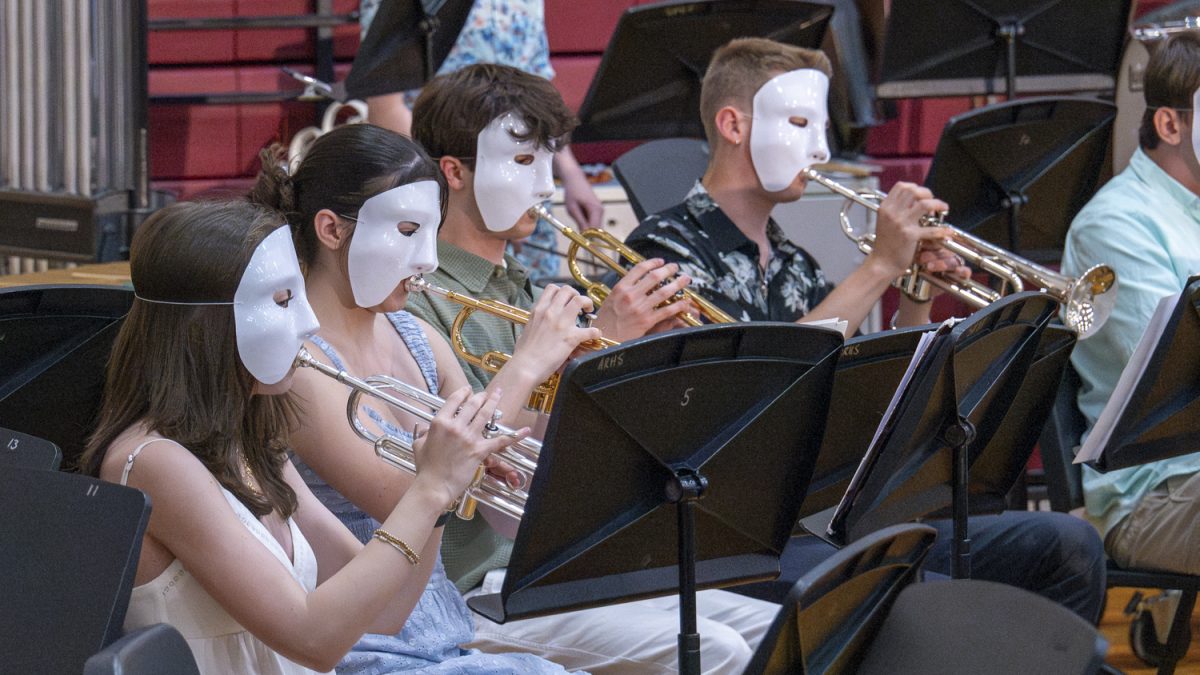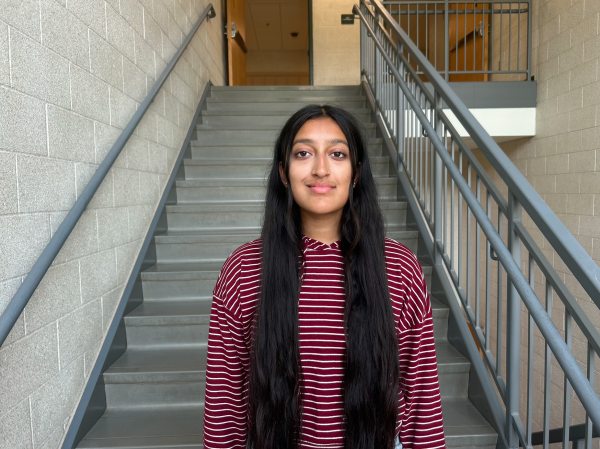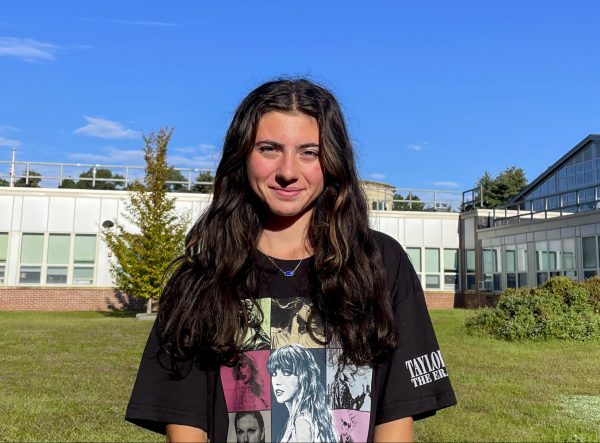Starting with the current freshman class, students at Algonquin will be required to take at least one half-year Fine and Performing Arts class by the time they graduate, as administration believes arts education is enriching to students’ educational experiences and prepares them for the workforce.
Previously, students could either take an Applied Arts and Technology or a Fine and Performing Arts class in order to fulfill the graduation requirement; however, administrators have realized the two departments contain fundamentally different classes. Applied Arts and Technology classes include business courses along with courses such as Wood Tech and Global Cuisine, while Fine Arts includes visual arts classes, music and theater. In addition, students are already required to take two Applied Arts courses: Digital Literacy or Exploring Computer Science and Microeconomics or Financial Literacy.
 “To my understanding and in my thinking, even though ‘arts’ is in the [Applied Arts and Technology] title, the Fine and Performing Arts classes are pretty different, so they shouldn’t have been housed under the same graduation requirement,” Principal Sean Bevan said. “Previous to the new requirement, a student could have met the requirement by taking an Applied Arts and Technology class, like Social Media Marketing, which may have an artistic component but aren’t as dedicated to the arts or as focused on the arts as let’s say Ceramics or Photography, both Fine and Performing Arts classes.”
“To my understanding and in my thinking, even though ‘arts’ is in the [Applied Arts and Technology] title, the Fine and Performing Arts classes are pretty different, so they shouldn’t have been housed under the same graduation requirement,” Principal Sean Bevan said. “Previous to the new requirement, a student could have met the requirement by taking an Applied Arts and Technology class, like Social Media Marketing, which may have an artistic component but aren’t as dedicated to the arts or as focused on the arts as let’s say Ceramics or Photography, both Fine and Performing Arts classes.”
According to Fine and Performing Arts Department Head Amy Collins, the revised graduation requirement also seeks to address the decline in Fine and Performing Arts enrollment rates over the past decade.
“In recent years we haven’t seen a huge shift in enrollments, in terms of total number of students, but previous to the past couple of years, the art numbers were definitely a lot higher,” Collins said. “I’ve been at Algonquin for 21 years and we’re talking about around 100 kids signed up for Art I versus only 30 now, which is a big shift over the course of many years.”
Visual Arts teacher Michelle Sheppard has noticed the number of students drop significantly in her photography classes over the years, calling it “jaw-dropping and frankly heartbreaking.”
“When I started teaching here in 2005, I taught around 100 to 125 students a day,” Sheppard said. “If I flip through a yearbook from 2007, 2008 and I look at any of those pages, I know at least one kid, often many kids, on every page of the yearbook, but if I look at a yearbook now, so many of the faces I’ve never seen before.”
Sheppard believes it is hard to recover once enrollment rates start decreasing.
“Once the numbers drop, it’s hard to bring them back because there aren’t as many kids saying ‘Hey, this is a great class; you should take it,’ and our classes are something that a lot of kids don’t even know about,” Sheppard said. “So many kids have said they didn’t even know we have a darkroom.”
The reasons for the steady decline in enrollments are unclear, but there are many potential factors. Bevan attributes some of the drop in enrollment numbers to the decrease in student population from over 1400 seven years ago to fewer than 1200 today.
“Fewer kids of high school age [are] in our district which results in smaller numbers in school and also in Fine and Performing Arts,” Bevan said.
Collins speculates fewer students are enrolling in arts classes due to a shift in mindset.
“I think maybe a big part of it is the way people think and learn is different than years ago; there’s a lot of feel for instant gratification now that the discipline, diligence and resilience needed for some of the arts might scare people away,” Collins said. “People don’t want to fail and you will fail initially in the arts and that’s okay, that’s how we learn, but I think people are scared of not being good at something right away.”
Collins hopes the graduation requirement inspires students to find interest in the arts.

“I hope the requirement encourages students to find something to do during the day here that is different from the other classes they take and, who knows, it might open a whole new world to someone,” Collins said. “Or it might not, but they will learn a new skill or something special in the process anyway.”
There have been mixed student reactions to the new requirement. According to a Harbinger survey of 132 students conducted through Google Forms from Jan. 3 to Jan. 7, 46% of students think a Fine or Performing Arts class should not be required to graduate and 36% believe that it should be a requirement.
“I disagree with the revised requirement because students have already had their experience with fine art starting in third grade,” senior Sitan Zhan, who took two years of orchestra at ARHS, said. “Hence, students should be self realized enough to know what they want to take in high school.”
Many survey respondents agreed, stating that some students aren’t interested in the arts and should not be forced to take one.
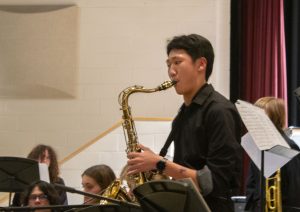
“If someone has a clear idea of the classes they need to take for the particular path they want to pursue and a fine art is not one of them, needing to take one may actually take away from other classes they need to take,” a survey respondent said. “Not everyone is interested in fine arts electives either, and we already explored them in middle and elementary school so it’s not as though we are missing out completely because we don’t know about a subject.”
Other students believe the graduation requirement is beneficial to all students, even those who don’t wish to pursue art after high school.
“I think [the revised graduation requirement] is a great opportunity for students to find a new interest or evoke a new passion within themselves,” senior Oliver Kubik, who is President of Tri-M and plays tenor saxophone for Jazz I, said. “Even if you do not plan on continuing to pursue the passion after the course is over, at least you have a cool party trick to show off to your friends. I find that these courses have helped me find joy in my high school experience and I hope others find that same joy.”
Kubik also values the community aspect of Fine and Performing Art classes, especially the musical classes and groups.
“A benefit is that you get to meet new people and feel a bonding connection; I think this is extremely crucial especially if you are new to the school,” Kubik said. “Another benefit I would mention is that you get to try something out that you’ve never done before. Our school has tons of opportunities in every department, and my advice would be to take advantage of those opportunities.”
Bevan, who was an art history minor in college, is troubled that students are not enrolling in the Fine and Performing Arts in the same percentages and at the same rates as they have in the past.
“It is unfortunate because I think the arts are so important and they give students a chance to express themselves and be creative,” Bevan said. “Also, the arts provide a little bit of a break from the academic demands of students’ schedules and to work on something that might inspire or get them excited about something in a way that might not be the same as they are getting from their other classes.”
Because underclassmen are not automatically enrolled in a Fine and Performing Arts class, unlike in other subject areas, Collins believes their classes are at a disadvantage in the course selection process.
“We didn’t, and I guess we still don’t, have a built-in network during course selection,” Collins said. “You have an English, Math, Social Studies, World Language and Applied Arts teacher who can say [to their current students] ‘Hey, we have this class, you should take this, here’s a recommendation,’ but we don’t have that face time with students to even meet them and introduce ourselves and what classes there are unless they enroll in a Fine and Performing Arts class themselves.”
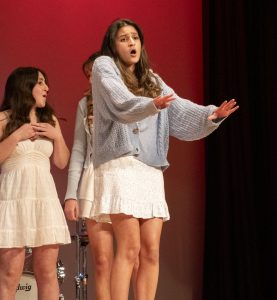
Bevan also believes the push for promoting STEM (Science, Technology, Engineering, Math) as an area of focus in the last 10 years could also deter kids from adding art courses to their schedules. According to the Harbinger survey, 70% of students said they think colleges want to see STEM classes instead of art classes, and 60% said they think art classes will not have a positive impact on their application.
“I think families and students see such high value in our STEM classes, which of course there is, but there’s only so much room in a student’s class schedule,” Bevan said. “So if a student is trying to make an electives decision, I think students are gravitating towards academic elective courses because maybe they think that will position them to be more competitive when they apply to college.”
Collins disagrees with the sentiment that colleges don’t value the arts and believes that experience in the arts will help students in their application process as well as in college. According to MassCore, a state-recommended program of study in order to align high school coursework with college and workforce expectations, high school students should take at least one full year of an arts class.
“While our [new] graduation requirement is not that, it is closer than the previous requirement, and if you look at a lot of colleges, definitely the California state schools, they require high schoolers to take a full year of art,” Collins said. “Art teaches you to be better at everything else that you do, and it helps with discipline and perseverance, both important skills for college and life in general.”
Collins is hopeful the graduation requirement will help increase class enrollments and truly believes all students should experience some art during their high school years.
“Art makes us human,” Collins said. “It gives us an opportunity to create something original and be your unique, authentic self, and I know not everyone is ready for that because it’s a vulnerable thing, to be creative and to try something like that, but it teaches you to be better at everything else that you do. So much in art and music is subjective not objective and I just think it’s so nice to have that as part of your school day. A lot of students say it’s a break for them.”









